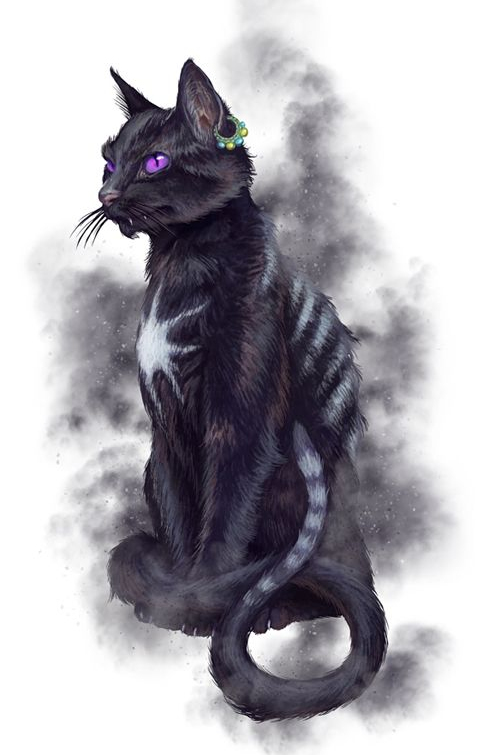The Kellas cat is a black feline found in Scotland. Once thought to be a mythological wildcat, with its few sightings dismissed as hoaxes, a specimen was killed in 1984 after being snared by a gamekeeper, Ronnie Douglas.[1][2] Now known to be a hybrid between wild and domestic sub-species of Felis silvestris,[3] it is not a formal breed of cat but a landrace of felid hybrids. The cat sìth Fairy cat of the Highlands of Scotland, black and as large as a dog. of Celtic legend may be based on folk memory of Kellas cats.[4] The historian Charles Thomas speculates that the Pictish stone at Golspie may depict a Kellas.[5] The Golspie stone, now held at the Dunrobin Castle Museum, shows a cat-like creature standing on top of a salmon, which may allude to the characteristics ascribed to a Kellas of catching fish while river swimming.[6]
Fairy cat of the Highlands of Scotland, black and as large as a dog. of Celtic legend may be based on folk memory of Kellas cats.[4] The historian Charles Thomas speculates that the Pictish stone at Golspie may depict a Kellas.[5] The Golspie stone, now held at the Dunrobin Castle Museum, shows a cat-like creature standing on top of a salmon, which may allude to the characteristics ascribed to a Kellas of catching fish while river swimming.[6]
Andrew Kitchener, researcher and Natural Sciences Curator at the National Museum of Scotland,[7] examined eight specimens of black felines.[6] One carcass was already in the museum’s collection; the remaining seven were supplied by Di Francis,[8] who is described by Thomas as a “writer, researcher and practical naturalist”.[6] Kitchener’s analysis identified one of the animals as a melanistic wildcat;[6] this juvenile male was the first wildcat ever documented as melanistic in Scotland. Most of the other specimens examined were concluded to be hybrids but more closely aligned to the wildcat; only one hybrid leaned more towards a domestic cat.[9]
The Kellas cat is described as being twenty-four to thirty-six inches (61 to 91 cm) long, with powerful and long hind legs and a tail that can grow to be around twelve inches (30 cm) long; its weight can range from five to fifteen pounds (2.3 to 6.8 kg).[10] Douglas had measured the animal snared in 1984 and he stated it was fifteen inches (38 cm) to shoulder height and forty-three inches (109 cm) in length.[11] A specimen is kept in a museum in Elgin.[12] The Zoology Museum of the University of Aberdeen also holds a mounted specimen that in 2002 was found in the Insch area of Aberdeenshire.[13]
